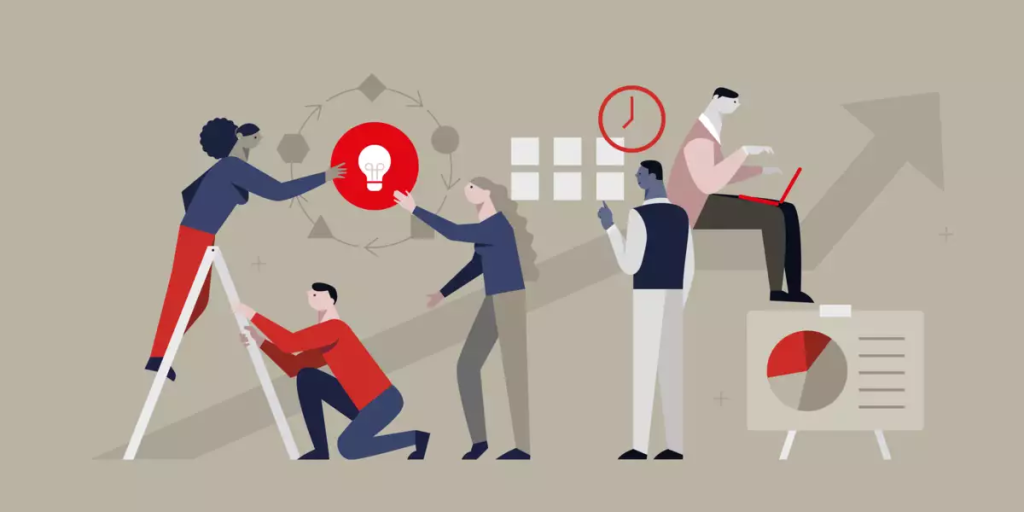From Recruitment to Retention: Strategies for Designing a Dream Team
A recent survey revealed that 96% of the currently employed workforce is actively looking for a new job in 2023. The movement has been dubbed ‘the great resignation’ by the media. This statistic represents the specific mentality of the employees of today. They need more than just a salary at their place of work. They wish to feel fulfilled while experiencing a healthy work-life balance. The biggest challenge companies face is to recruit employees who fit their company culture and retain them by keeping them engaged with your vision. Below are some strategies from recruitment to retention that will help you easily design your dream team. Keep reading to learn more about your possible recruitment to retention strategies.
1. Offer the Utmost Flexibility to Your Team

An organisation’s ideal retention and turnover rates are estimated to be 90% and 10%, respectively. However, the reality is that the actual turnover rate is close to 57%. This relates to the above statistic about employees actively seeking new employment today. Employees leave their current companies for many reasons. According to a popular job portal, employees jump ship for the following reasons:
- Wanting a higher salary
- Feeling unchallenged in their current role
- Wanting to feel valued in their company
- Seeking a better management relationship
- Craving a better work-life balance.
The ideal solution to the above-mentioned issues is to give your employees more freedom with their jobs. ‘Split shifts’ is a rising phenomenon in human resources that tackles this problem by splitting singular employee shifts into two or more. The relatively new concept works on the idea that employees should be given greater flexibility on their workday and time off to relax instead of going through an entire shift in one go. There are significant pros and cons of split shift schedules that companies need to consider.
The pros are:
- It allows them to work on their day-to-day tasks into their work day efficiently.
- They don’t feel overwhelmed with a continuous eight-hour shift.
The cons are:
- It elongates the work hours, and employees can’t fully enjoy their time off as they need to return to work anyway.
- Some employees desire continuous work hours for uninterrupted concentration, which they cannot achieve with this model.
The ideal solution is to implement shift schedules per your employees’ requirements. Allow them to opt for it independently, see how it works, and leave the final decision to them if they wish to continue. This helps you give complete control and flexibility to the employees. They can find value and flexibility in their job role however they wish. It helps them find joy in their job and with your company as they know they’re in control.
2. Start Filtering Right at the Resume

One of the most effective ways to build a dream team is to begin filtering out candidates right at the first step. Most companies think about checking if the candidate fits their company culture during the interview stage. That is too late. Begging right the resume scanning. Pick candidates with relevant keywords in their resume and leave out the ones that don’t. This helps you narrow the candidate pool significantly.
Checking resumes for relevant keywords inspires candidates to put effort into the job application they send you. The best AI resume builder will focus on presenting the qualities of the candidates that make the perfect fit for the job role in question and the company culture as a whole. Herein lies the key to building your dream team: you pick candidates that will fit your company vision instead of hiring candidates and then moulding them. Pick motivated employees who wish to perform to the best of their abilities and build a strong workforce
Here are the qualities you should seek in the resumes of candidates and the keywords that relate to them:
- Team player — Team-oriented, cooperative, group-focused, collaborative, supportive.
- Team leader — Motivated, spearheaded, and pioneered.
- Quick learner — Active listener, attentive learner, adaptable, and detail-oriented.
- Self-starter — Independent, self-motivated, result-oriented, ambitious, and disciplined.
3. Help Them Unlock Their True Potential

Whether you’ve hired the most suitable employees from the get-go or struggling with a motivated team, one way to set them on the path to becoming the dream team is to manage them meticulously. Workforce planning refers to analyzing the current abilities of your workforce to match them with your needs to deliver the most optimized performance for your firm. Workforce planning software helps break workplace planning to make informed decisions regarding delegating tasks.
Here is a step-by-step guide to optimized workforce planning in your firm:
- Begin by analyzing what tasks need to be performed in your firm on a day-to-day basis and long-term projects.
- Analyze the recent performance of your employees to organize relevant data about their skills, abilities, and productivity.
- Match their skill sets with tasks that must be performed to develop the most optimized combinations.
- Give the employees and team reasonable deadlines to meet expectations and monitor their real-time performance to see if they’re genuinely well-matched with their tasks.
- Support them as and when needed during the performance of a task.
- Review their performance and let them know if there needs to be anything done differently the next time.
- Repeat the same process for the next set of tasks.
This approach prioritizes the skills of your employees to match them with tasks that will allow them to exercise them entirely to their benefit. This creates better engagement and fulfilment for the employees. It results in increased productivity and optimized workflows that help you foster a positive work culture. It’s the right step forward in creating a dream team that takes your company to the next level in growth and success.
4. Understand What Your Firm Needs
If you feel lost trying to create a formidable workforce, it’s better to take a few steps back and analyze the situation. Understand your company’s workings to find out what your needs are. This will look something like this:
- Divide the tasks that need to be performed into different segments.
- Divide your workforce into various departments and teams. Remember that some employees can overlap with other groups.
- See what job roles require what skill sets.
- Review tasks and job roles to identify what roles should be and in what number.
These segmentations give you a clear idea about the workings of your organization. You can identify new job roles that need to be there and job roles that may be redundant now. When you have a clear idea of what your firm needs, you’re simply able to hire better. It also helps you better set up orientations for different job roles, with clear instructions that help employees easily grasp their responsibilities and functions. It eliminates confusion and promotes better and optimized workflows in your organization.
5. Review Performances Continuously
There are ardent debates on how often performance reviews should be conducted. While it depends on the nature of your operations and how big your team is, employee performance should be evaluated continuously. By tracking employee performance constantly, you’ll be able to track patterns in their performance that could contribute to it being subpar. This will be an excellent aid when discussing their performance and helping them improve it for the future.
A 2020 report by SHRM found that around 30% of employees get discouraged by negative feedback from their employers that they actively seek new employment. If you have solid proof and analytics about what is lacking in their performance, you can support the negative review and not discourage the employee. They will understand that you’re simply speaking through observations. Moreover, having continuous data will help them identify their shortcomings better. They would know to work on to improve in the future.
You may meet with employees about their performance as you see fit, but their appraisal needs to be consistent. This gives you more extensive data sets and helps you better understand employee patterns. Based on it, you can also provide them with the needed support going forward.
Recruitment to Retention – Positive and Driven Work Culture to Hire & Retain the Best Talent
Today’s Employees seek more than just a good salary to make them stay with an employer. You must create a positive work culture to hire and retain the most suitable staff in the long run. Offer your team flexibility with their jobs to give them freedom and control in their day-to-day work. Hire people who will fit your company culture rather than hiring them and trying to fit them into your work. And indulge in workforce management to help them perform to the best of their abilities. Tell us in the comments what you think are the best ways to hire and retain the dream team for your organization.




Leave a Reply